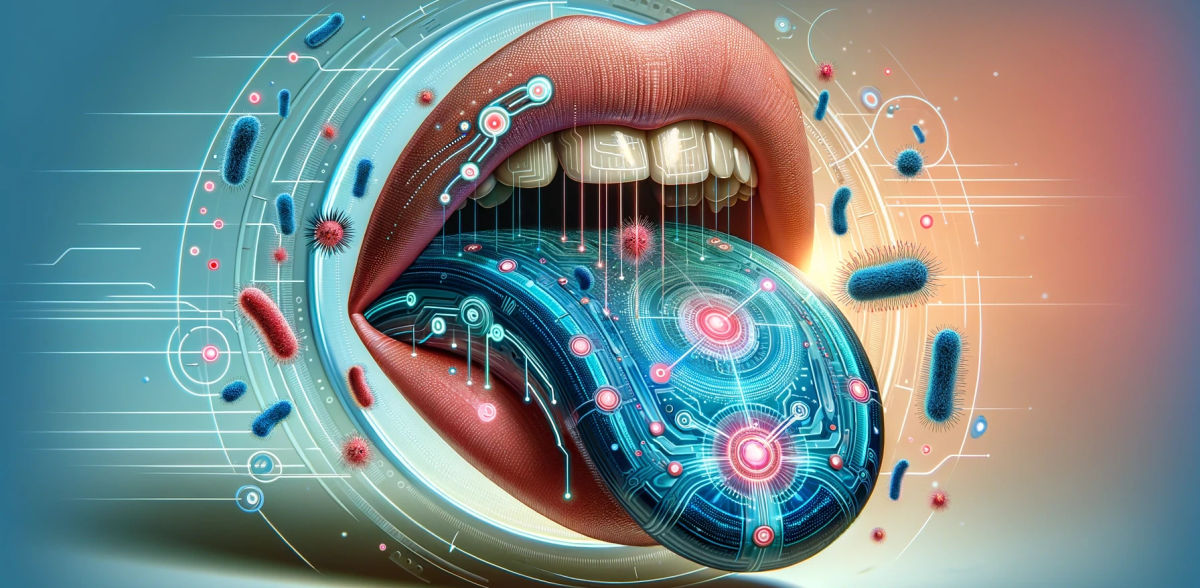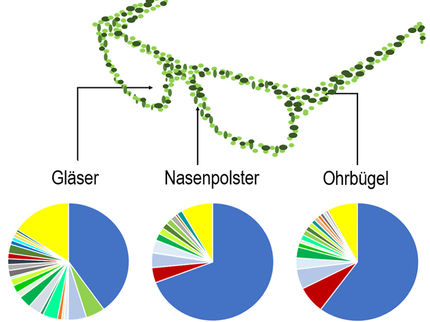‘Artificial tongue’ detects and inactivates common mouth bacteria
In the future, bacterial dental diseases could also be diagnosed and treated using this sensor system
From the fuzzy feeling on your teeth to the unfortunate condition of halitosis, bacteria shape mouth health. When dental illnesses take hold, diagnosis and treatment is necessary, but identifying the microorganisms behind an infection can be a lengthy and expensive process. Now, researchers reporting in ACS Applied Materials & Interfaces have designed a chemical sensor array, or an artificial tongue, that distinguishes dental bacteria and can inactivate them.
When bacteria are suspected as the agent behind dental disease, such as cavities or periodontitis, the first step is to identify the source. Traditional detection and identification methods can involve culturing or looking for specific DNA markers belonging to different species using sophisticated equipment. So, Na Lu, Zisheng Tang and coworkers wanted to investigate a simple and less expensive alternative: sensor arrays known as electronic or artificial tongues. Previously developed artificial tongues have detected and measured several types of bacteria, similar to how a real tongue can taste multiple flavors at once. And the researchers wanted to add in the capability of reducing the effects of, or inactivating, the identified dental bacteria.
The researchers turned to a nanoscopic particle that mimics natural enzymes, called a nanozyme, and made them from iron oxide particles coated in DNA strands. When hydrogen peroxide and a colorless indicator were added in solution, the presence of nanozymes caused the indicator to turn bright blue. However, bacteria that adhered to the DNA decreased the nanozyme’s reactivity, reducing the amount of blue color produced. The researchers coated nanozymes with different DNA strands so that each type of bacteria could be linked to a unique change in color signals. To test the DNA-nanozyme system, as an artificial tongue, the researchers created samples of 11 different dental bacteria species. The sensor array was able to identify all the bacteria in artificial saliva samples. Then, using the DNA-encoded nanozyme sensor array, the researchers were able to distinguish whether a dental plaque sample came from a healthy volunteer or from a person with cavities.
In addition, the DNA-encoded nanozyme sensor array had antibacterial effects on the dental bacteria species tested. Compared to controls without the nanozymes, three typical bacterial species were inactivated in solutions containing the nanozyme system. Scanning electronic microscopic images suggest to the researchers that the nanozyme system destroyed the bacteria membranes. They suggest that this sensor system could also be used in the future to diagnose and treat bacterial dental diseases.
Original publication
Most read news
Original publication
Ling Zhang, Zhengnan Qi, Yichi Yang, Na Lu, Zisheng Tang; "Enhanced “Electronic Tongue” for Dental Bacterial Discrimination and Elimination Based on a DNA-Encoded Nanozyme Sensor Array"; ACS Applied Materials & Interfaces, 2024-2-25
Topics
Organizations
Other news from the department science

Get the analytics and lab tech industry in your inbox
By submitting this form you agree that LUMITOS AG will send you the newsletter(s) selected above by email. Your data will not be passed on to third parties. Your data will be stored and processed in accordance with our data protection regulations. LUMITOS may contact you by email for the purpose of advertising or market and opinion surveys. You can revoke your consent at any time without giving reasons to LUMITOS AG, Ernst-Augustin-Str. 2, 12489 Berlin, Germany or by e-mail at revoke@lumitos.com with effect for the future. In addition, each email contains a link to unsubscribe from the corresponding newsletter.
























































